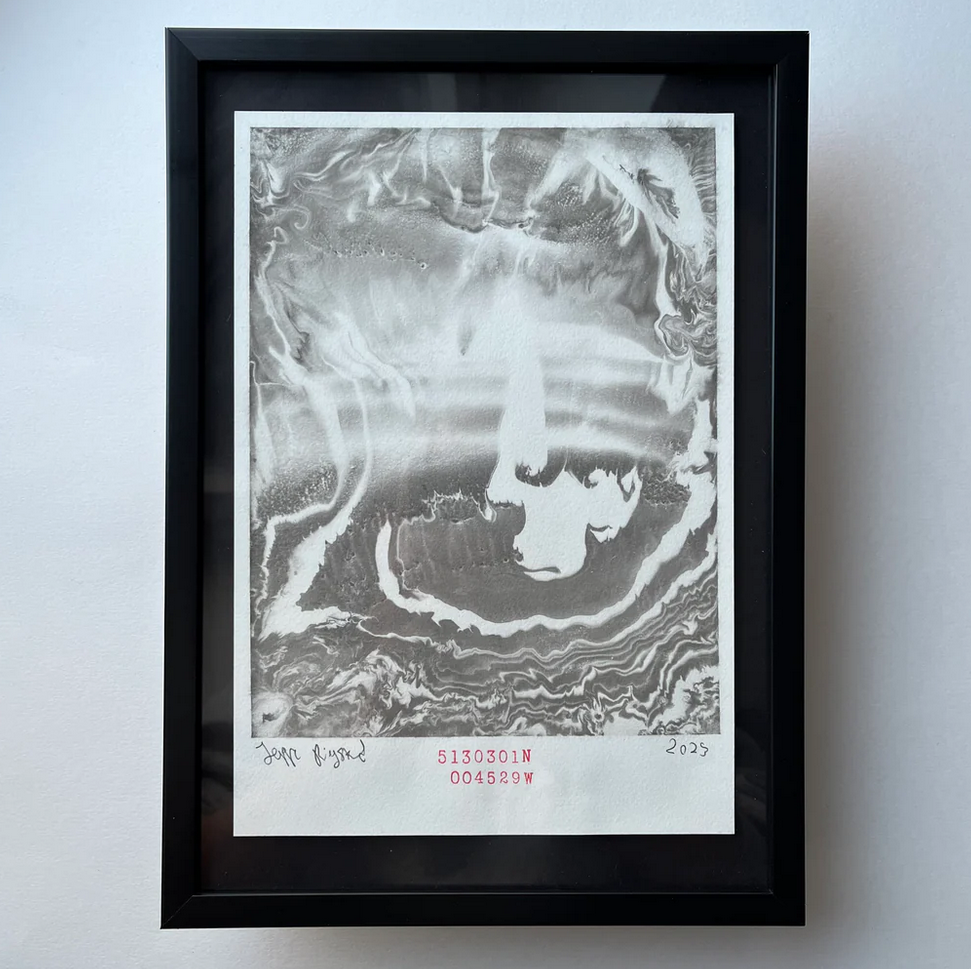Danish artist, Jeppe K. Ringsted is an abstract artist who creates his pieces by pouring biodegradable and non-toxic ink into puddles in cities across the globe. By doing so, Ringsted is creating a database of puddle topographies, charting what elusive puddles contain in these cities. Each piece is a small city profile, showing people what their run-off water contains, cataloguing everything from its soil quality, water cleanliness and even carbon emissions.

Ringsted’s pieces give his viewers a better idea of what the environmental landscapes of these cities look like. He becomes a gateway that encourages city-dwellers to look closely at their surroundings and consider what positive impact they can make on their environment. All so they can strive to create greener cities of the future that are hospitable for both nature and humanity. This is why Ringsted’s pieces are aligned with the United Nations Sustainable Development Goal of Sustainable Cities and Communities.
Ringsted’s pieces are made by blotting non-toxic ink onto puddles that he would then pick up on a piece of paper. His inks are made from carbon soot and sap from moonflower leaves. He pays particular attention to this element so as to ensure that his creative process does not affect the puddle’s water quality. By doing so, he also preserves the puddle’s authentic properties. This process gives him final pieces that visually resemble black and white topographic maps, symbolic contour lines of what human life in cities has done to the environment.
Ringsted’s curiosity about puddles also comes across as endearing; they entice his viewers with the almost universal childhood experience that people have of jumping into puddles. However, as it has been touched upon in this article, his pieces carry within them the hefty question of a city’s livability. An article by Curbed New York summarized that puddles, like the ones Ringsted profiles, contain traces of sewage, garbage debris, animal and human droppings and general dirt and grime.
The article also includes a warning from Manhattan-based podiatrist Dr. Stuart Bernstein that people should avoid jumping into puddles in cities, especially New York City. This is mainly because fungal infections from stepping on puddles are not unheard of, causing rashes and blisters. This unfortunate reality exists in cities today, far removed from the shared nostalgia of jumping into puddles and playing in rainwater.
In most of his pieces, from Moesgaard to London, white splotches of residues that can only be all sorts of malevolent bacteria and grime are found, further betraying how they are filled with contaminants. Therefore, the nostalgia that Ringsted’s pieces evoke becomes instead a goal to strive towards. One piece, titled 18°55'26.9"N 102°26'43.3"E: Laos acts as a control sample. Unlike others, this piece was made in the Nam Song River that runs through the city of Vang Vieng, Laos. Vang Vieng is often described as a small town instead of a city, known for its picturesque limestone cliffs, paddy fields, caves and karst topography. In this idyllic landscape where nature thrives, Ringsted’s piece is almost fully black, with thin white lines running across it. This betrays the water’s pristine quality, begging other cities to follow suit and cultivate similar circumstances.
Know more about Jeppe K. Ringsted’s ink blot paintings and other initiatives by checking his website or Instagram @jepperingsted.
